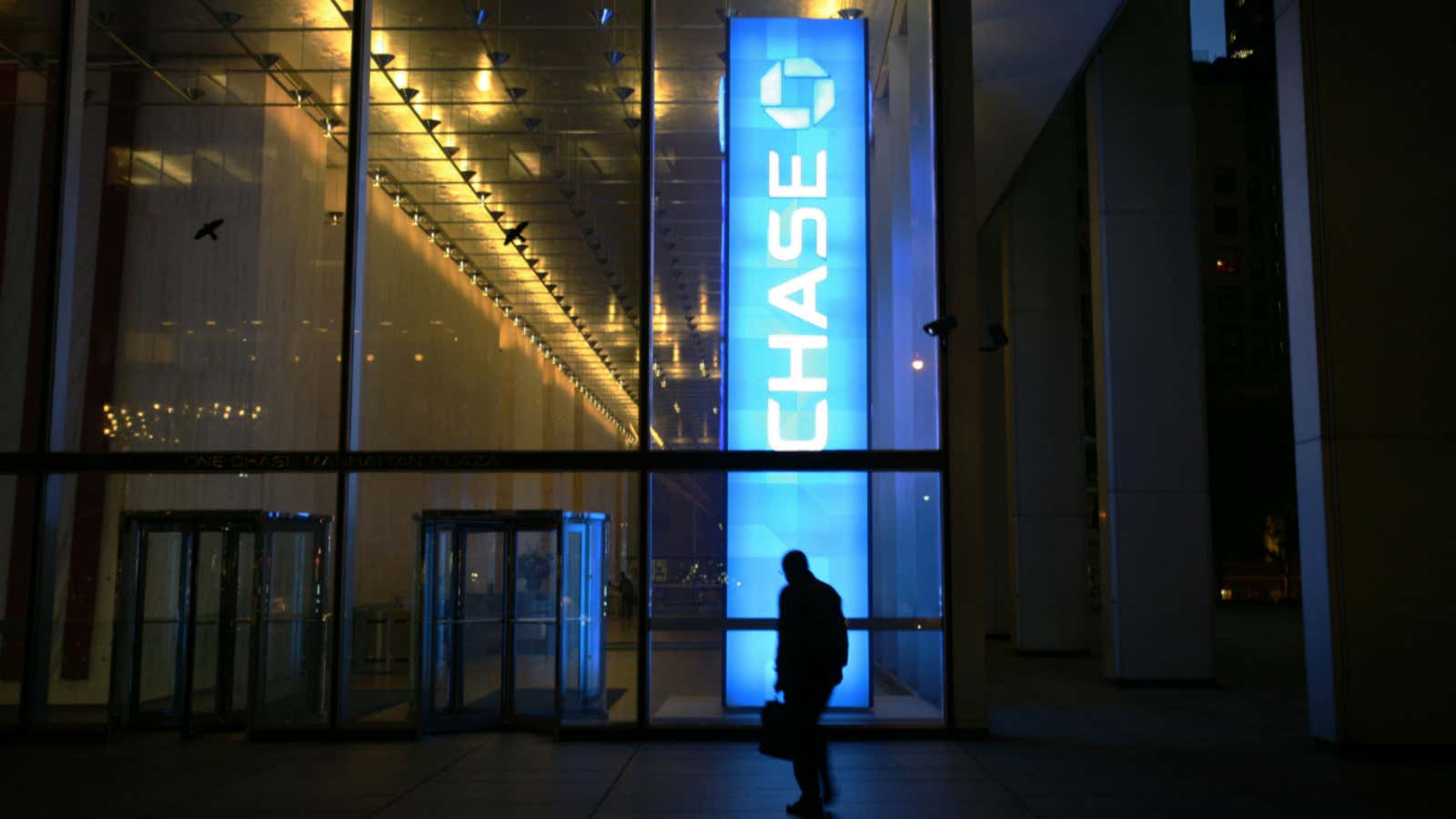It wasn’t the bank. It was the bank’s employees.
Seems a fine line, but that’s the distinction that’s been drawn in two of the biggest financial prosecutions since the 2008 crisis.
Today two ex-traders from JP Morgan Chase were charged with conspiracy to falsify books and records in the $6 billion trading loss that a London division of the bank suffered last year. (A key trader first closely identified with the loss, Bruno Iksil, who won the sobriquet “The London Whale”, was not charged; he is cooperating with investigators.)
Prosecutors say the pair intentionally mis-valued the prices of the securities they were trading to hide the size of the losses. That caused the bank to understate the losses in its first-quarter earnings report in April 2012 (when its CEO, Jamie Dimon, famously called the affair a “tempest in a teapot“). JP Morgan later restated its earnings.
A similar pattern played out for Fabrice “Fabulous Fab” Tourre, the ex-Goldman Sachs banker recently convicted of defrauding investors in a mortgage-bond deal gone bad. Tourre’s ex-employer, Goldman Sachs, had settled related SEC charges in 2010, paying $550 million and neither admitting or denying guilt. (JP Morgan, too, is reportedly negotiating a settlement.)
At least some people are getting charged—a relief to those worried about “too-big-to-jail,” the apparent government reluctance to prosecute powerful Wall Street firms or their staff. But leaving aside the fact that you can’t actually jail a bank, isn’t it a little strange not to prosecute JP Morgan, or even its top executives, for submitting false earnings reports, and only go after mid-level employees?
It’s hard to say. Legal scholars differ on the wisdom of prosecuting corporations. While some say it’s important to publicly brand bad companies as ne’er-do-wells, that stigma can sometimes be too strong, damaging or even destroying their business and hurting innocent employees, public shareholders and even the economy at large. That’s why prosecutors sometimes aim just for the employees responsible.
But there are also risks to attacking too far down the totem pole. Corporate managers “may view officers and employees as expendable and may institute policies that encourage illegal but profitable behavior. In such instances, conviction of individuals only, ignores the fact that pressures may be coming from within the organization itself,” wrote Elizabeth K. Ainslie, an ex-prosecutor who has written about the challenges of charging corporations with crime.
Getting the balance right is tricky. But the end goal is quite simple.
“You have to make the firm believe correctly that it cannot profit from crime,” said Jennifer H. Arlen, a professor at NYU’s School of Law who has studied corporate criminal liability. “And we are nowhere near that point.”
